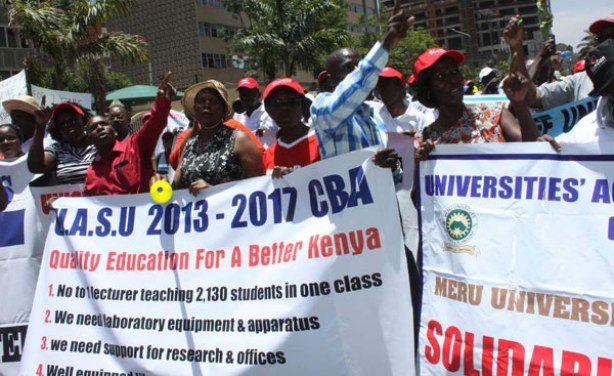Asia/ India/ 09.09.2019/ Source: www.financialexpress.com.
There is a need for expert management, and innovative and professional human resource development systems at higher education institutions.
Higher education is now a priority area for the government, as is obvious from the recommended standards and budgetary provisions for the same in the recent Union Budget. While higher education is booming in many countries, including in India, managing the massive expansion of higher education has become challenging for governments and regulatory bodies alike. In many countries, higher education is suffering from problems such as falling standards and quality, poor infrastructure and maintenance services, inadequate support systems, capacity overload, and inadequate manpower and good faculty.
In the context of growing global competition in the higher education space, a university or a higher education institution (HEI), as an organisation, may have to cope with changes in demographic structures, descriptive technologies, regulatory reforms, new learning products and frontier research. The paradigm of a university being a static instrumental entity appears to be obsolete in terms of scope and scale. While a modern university seeks to explore new frontiers of knowledge through learning and research, it also faces issues relating to scale and scope. By scale what is implied is the capacity of a university to absorb the growing number of learners and their unmet needs in pursuit of learning and research. For a dynamic university, enrolment tends to grow over time rather than remain
Higher education is now a priority area for the government, as is obvious from the recommended standards and budgetary provisions for the same in the recent Union Budget. While higher education is booming in many countries, including in India, managing the massive expansion of higher education has become challenging for governments and regulatory bodies alike. In many countries, higher education is suffering from problems such as falling standards and quality, poor infrastructure and maintenance services, inadequate support systems, capacity overload, and inadequate manpower and good faculty.
In the context of growing global competition in the higher education space, a university or a higher education institution (HEI), as an organisation, may have to cope with changes in demographic structures, descriptive technologies, regulatory reforms, new learning products and frontier research. The paradigm of a university being a static instrumental entity appears to be obsolete in terms of scope and scale. While a modern university seeks to explore new frontiers of knowledge through learning and research, it also faces issues relating to scale and scope. By scale what is implied is the capacity of a university to absorb the growing number of learners and their unmet needs in pursuit of learning and research. For a dynamic university, enrolment tends to grow over time rather than remain constant over the years. Scaling up may generate quality concerns with regard to learning and research outcomes. What transforms a scaling-up university to an innovative one is its ability to invent progressive processes that coordinate between scaling up and quality concerns. In the context of scaling up that induces more quality in terms of scope for new research and learning streams, the pivotal aspect in transforming the organisation to an innovative and resilient one depends on how a university is evolving as an organisation through systems, processes and praxis (practice). In this milieu, along with other organisation processes, human resource management is an indispensable component in organising a dynamic and innovative university into a globalised higher education system.
The term ‘human resource development (HRD)’ has been widely used by management experts in the corporate sector. Given the recent development of HEIs metamorphosing from an institute to an organisation, HRD has to play a key role. Initially, the governance of a university or an HEI was fully taken care of by academic staff members. However, given the various challenges, objectives, accountability, governance structure, challenges of fund management in absence of full support from the government, dependence on student fees, brand-building, etc, the responsibility has at least partially shifted to trained HRD professionals for taking care of such challenges. This responsibility includes manpower management, recruitment, training and development, designing good HR policies for attracting and retaining talent, performance evaluation systems, staff welfare measures, etc. Currently, the role and importance of HRD is ignored at most Indian academic institutions. Given that human resources of an HEI is extremely important, whether it is academic or non-academic, both need to be taken care of professionally to achieve the ultimate goals—bright graduates and research output—in a consistent manner.
India’s HEIs have grown enormously since 1947, but the condition of higher education is still not up to global standards, and very few Indian HEIs make it to the list of the top universities in the world.
Most HEIs in India still follow traditional management systems such as the old personnel management style; instead, we need expert management systems and innovative development systems.
The primary objective of an academic institute is to develop the knowledge, skills and all-round personality of its students, and provide them high-quality and comprehensive educational training, development and opportunities. The realisation of these goals is only possible if the development and motivation of academic and non-academic staff is also taken care of.
In this context, HEIs in India should develop dynamic professional human resource management systems that should focus on (1) recruitment and selection, (2) training and development, (3) strategic human resource management, (4) higher education and development, (5) performance management, (6) human resource planning, (7) labour relations, (8) social welfare development, and (9) compensation and benefits.
Source of the notice: https://www.financialexpress.com/opinion/what-india-needs-at-higher-education-institutions/1699982/







 Users Today : 7
Users Today : 7 Total Users : 35404630
Total Users : 35404630 Views Today : 7
Views Today : 7 Total views : 3334217
Total views : 3334217